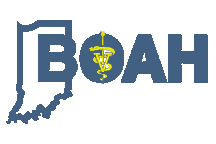What is a Residue?
Drug residues result when a drug or its metabolite is detected above the legal limit in a food product. Residues can occur in milk, meat (tissue), honey or eggs. Milk residues are detected at the processing plant when milk from each tanker load of milk is tested before it is unloaded. Tanker trucks can contain milk picked up from one large farm or may contain co-mingled milk from multiple small farms. Regular milk quality samples from dairy farms are also tested for residues at the lab on a regular basis. The food product containing a residue is considered contaminated by the FDA and must be removed from the human food supply.
Why do milk drug residues occur?
There are many different reasons a milk residue can occur, but they generally fall into one of the four categories listed below.
| Milking a treated cow: |
|---|
|
|
|
| Improper cleaning: |
|---|
|
|
|
| Equipment: |
|---|
|
|
| Improper drug use: |
|---|
|
|
|
What happens when a drug residue occurs?
The farm with a drug residue is notified as soon as the residue is detected. Milk cannot be used for human consumption from that farm until another milk sample tests negative for drug residues. The farm also receives a letter from BOAH, and a fine may be imposed based on the amount of milk shipped. The positive farm is responsible for the cost of all the milk on the tanker truck that is not theirs.
The farm owner must have a meeting on the farm with a BOAH veterinary epidemiologist and the farm’s private veterinarian to discuss the milk residue and residue prevention practices on the farm. A second residue within 12 months results in a meeting at the BOAH office and an additional fine. A third residue in 12 months would result in the loss of the farm’s milk license.
How can milk residues be prevented?
- Follow withdrawal times for all drugs. Talk to your veterinarian with any questions about withdrawal times.
- Keep records of all drug treatments for at least two years.
- Train all family members and employees who will be milking or treating cows. Training should include proper milking technique, correct treatment procedures, and drug residue prevention.
- Milk treated cows last or clean equipment thoroughly after milking a treated cow.
- Don’t put off marking a treated cow or recording treatments. Do these when treating a cow so you don’t forget.
- Mark dry cows as treated even if they are moved to a separate pen or separate location after receiving treatment.
- Pay attention. Most residues are caused by human error and are preventable.
